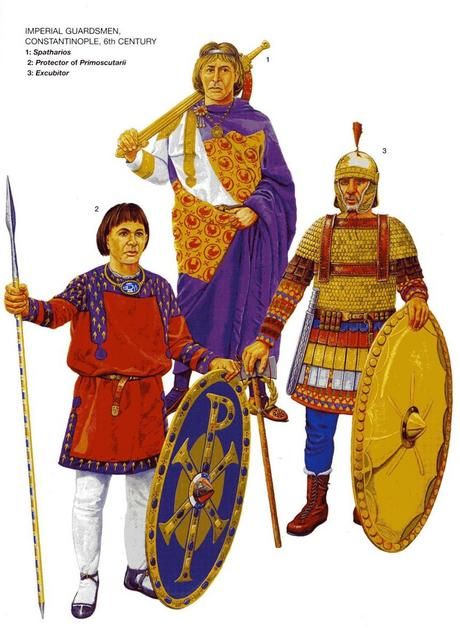PRINCIPAL COMBATANTS: Persia vs. Rome and the Göktürks
PRINCIPAL THEATER(S): Persia, Macedonia, Media, and Armenia
MAJOR ISSUES AND OBJECTIVES: Persia sought territorial expansion at the expense of the East Roman Empire
OUTCOME: Persia was defeated, suffered civil war, and made peace with Rome.
APPROXIMATE MAXIMUM NUMBER OF MEN UNDER ARMS: Roman army at the time of the intervention (590), 60,000; Persian forces at this time numbered about 40,000
TREATIES: Truce, 573–575; peace treaty between Maurice of Rome and Chosroes II of Persia, 591
Chosroes I (d. 579), emperor of Persia, sent an expeditionary force into Roman Mesopotamia after Justin II (d. 578), emperor of Rome, struck a threatening alliance with the Göktürks in support of an uprising among Christian Armenians. Simultaneously, Chosroes fought a defensive action against the Göktürks in the East.
Chosroes’s grandson, also named Chosroes (591- 628), laid siege to Dara and dispatched forces to raid Syria. The Persians penetrated as far as Antioch. Rome, recognizing that the war it had provoked was going badly, sued for peace and secured a three-year truce spanning 573-575. During this period, the Romans-and the Persians- prepared for an expanded war.
In 575, Chosroes dispatched his grandson into Roman territory again but was driven out of Cappadocia; in 577, the Roman general Justinian (527-565) defeated young Chosroes at the Battle of Melitene, just west of the upper Euphrates River. This drove the Persian forces to the west. Justinian exploited the advantage he had gained by invading Persian Armenia, advancing to the Caspian Sea, where he established a base and constructed a fleet of warships late in 577.
In 578, Justinian invaded Assyria, which prompted the elder Chosroes to sue for peace. This was negotiated when the old man died in 579, and the new Persian king, Hormizd IV (r. 579-590), repudiated his father’s negotiations, refusing to yield any territory. The war, therefore, continued-and continued to go badly for the Persians. They lost most of Armenia and were forced to withdraw from the Caucasus. For their part, the Göktürks overran Khorasan, penetrating as far as Hyrcania on the Caspian Sea. Within Persia, the reign of Hormizd IV proved disastrous. His tyranny provoked internal dissent and rebellion.
By 588, the Sassanid Empire of Persia was on the verge of collapse. At that point General Bahram Chobin (d. 591) performed a miracle: ambushing a larger Göktürkish force, he achieved a complete victory at the Battle of the Hyrcanian Rock. By pressing his advantage, he pushed the Göktürks out of most of the area south of the Oxus River (near Mus), but was defeated at the hands of the Roman emperor Maurice (539-602) at the Battle of Nisibis later in the year. This loss resulted in a Persian withdrawal to Armenia. Still later, in 589, Bahram sought to regain lost ground by going on the offensive at the Battle of the Araxes. After this defeat, Hormizd ordered Bahram’s relief, but the general refused to relinquish command. He now turned against the unpopular Persian emperor, whom he overthrew. The younger Chosroes now assumed the throne, but Bahram again refused to yield and seized the throne for himself. Chosroes found refuge with Persia’s Roman enemies.
Emperor Maurice took advantage of the Persian disarray by supporting Chosroes against Bahram. He dispatched a Roman army under Narses via Assyria to restore Chosroes. Simultaneously, Roman legions advanced into Media. Bahram met Narses in battle at the Zab River. Outnumbered (60,000 to 40,000), Bahram was defeated, fled, and was killed. Restored to the throne as Chosroes II, the new Persian ruler made peace with Rome.
Further reading: Geoffrey Greatrex and Samuel N. C. Lieu, eds., Roman Eastern Frontier and the Persian Wars: Part II, 363-628 A. D., a Narrative Sourcebook (New York: Routledge, 2002); A. T. Olmstead, History of the Persian Empire (Chicago: University of Chicago Press, 1972); Peter Wilcox, Rome’s Enemies: Parthians and Sassanids, vol. 175 (London: Osprey, 1988).
